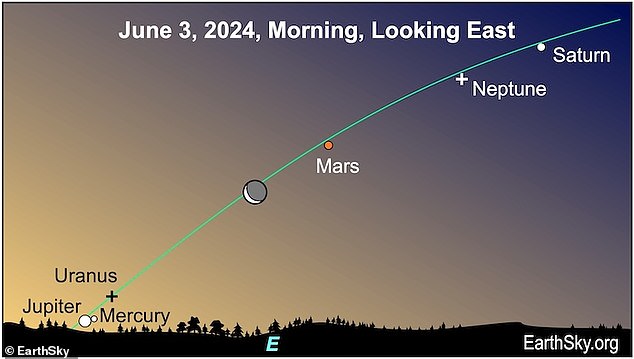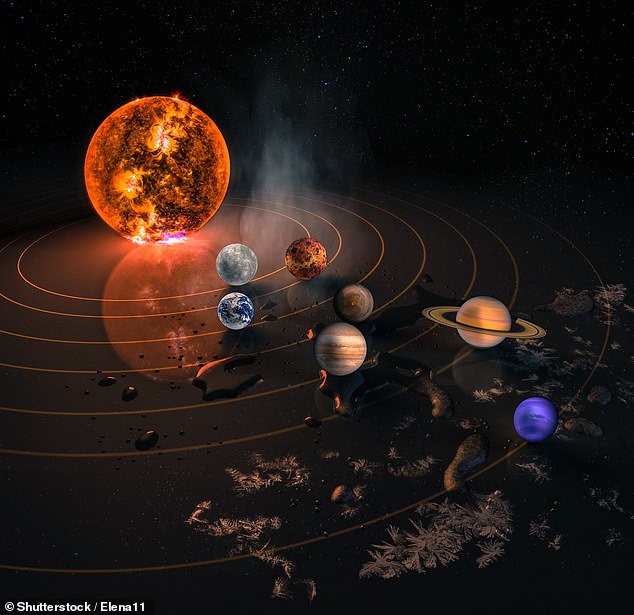TOMORROW a ‘parade of planets’ will appear in the night sky – here’s how the six distant worlds align
Just before sunrise from May 31 to June 3, a parade of six planets from our solar system will align – but only a lucky few will be able to spot all six.
The orbits of Mercury, Mars, Jupiter, Saturn, Uranus and Neptune will enter something like a morning procession.
But for most of the world, as NASA astrophysicist Ronald Gamble of the Goddard Space Flight Center put it, “The sun is going to photobomb the parade.”
However, many who brave the early morning hours will see Mars and Saturn accompanying a bright crescent moon – and astronomers said a much more visible and impressive alignment will take place on January 31, 2025, shortly after 6 p.m.
Just before sunrise from May 31 to June 3, a parade of six planets from our solar system will align – but only a lucky few will be able to see all six

Most sky watchers will have trouble spotting small, distant Mercury and gas giant Jupiter, experts say, because both worlds will be too close to the horizon to be visible, especially those who live in rocky or mountainous geographic areas.
“People who plan to get up early and go outside on June 3 expecting to see Jupiter’s inflated disk or Saturn’s rings at a glance will be quite disappointed, to say the least,” meteorologist warned Joe Rao this week.
Most sky observers will have difficulty seeing small distant Mercury and the gas giant Jupiter because both worlds will be too close to the horizon to be visible to most people, especially those who live in rocky or mountainous geographic areas.
And only those with good telescopes will be able to catch a glimpse of Uranus and Neptune, which, like Mercury, will be too faint to see with the naked eye.
According to the meteorologist, Uranus can be seen with the naked eye, but it is hardly visible and only stargazers who live in the right, remote areas.
“Only under very dark, non-light-polluted skies,” Rao wrote Space.com.
Of course, to see an object this faint, you have to know exactly where it is in the sky,” he noted. ‘A good star map will certainly help.’

“People who plan to get up early and go outside on June 3 expecting to see Jupiter’s inflated disk or Saturn’s rings at a glance will be quite disappointed, to say the least,” meteorologist warned Joe Rao this week. a view like this image above
For those who live in rural, flat, open country such as Montana or somewhere in the Great Plains region of America, and want to get up early in an attempt to spot this planetary parade, a few more modern versions of a star map to help.
Stellarium is a useful online tool that helps you plan where to look early in the morning and, on mobile, Sky Tonight’s free app can make hunting our solar system’s parade ground in June much easier.
You’ll still need a good telescope and even better weather to spot all six planets in one morning, but don’t despair if you can’t.
“You worry that planetary alignments are rare, but honestly we get one every few years,” Bill Cooke, head of NASA’s Meteoroid Environment Office, told me. ABCduring a five-planet alignment of Mercury, Jupiter, Venus, Uranus and Mars in March 2023.
